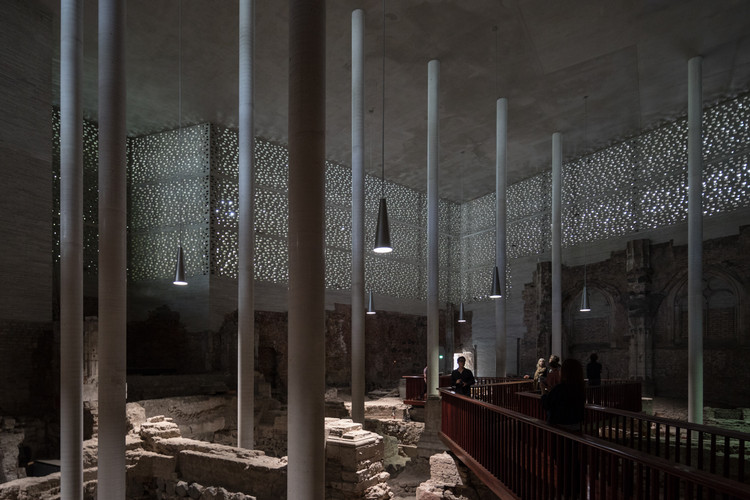
Peter Zumthor's quiet, technically pristine, and beautifully detailed work has long been an inspiration for architects. His Kolumba Museum, located in Cologne, Germany, a city that was almost completely destroyed in World War II, houses the Roman Catholic Archdiocese’s collection of art which spans more than a thousand years. Zumthor’s design delicately rises from the ruins of a late-Gothic church, respecting the site’s history and preserving its essence.

The facade of grey brick integrates the remnants of the church’s facade into a new face for the contemporary museum. Articulated with perforations, the brick work allows diffused light to fill specific spaces of the museum. As the seasons change, the”mottled light shifts and plays across the ruins,” creating a peaceful ever-changing environment.






































